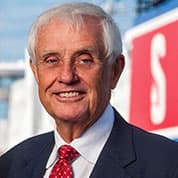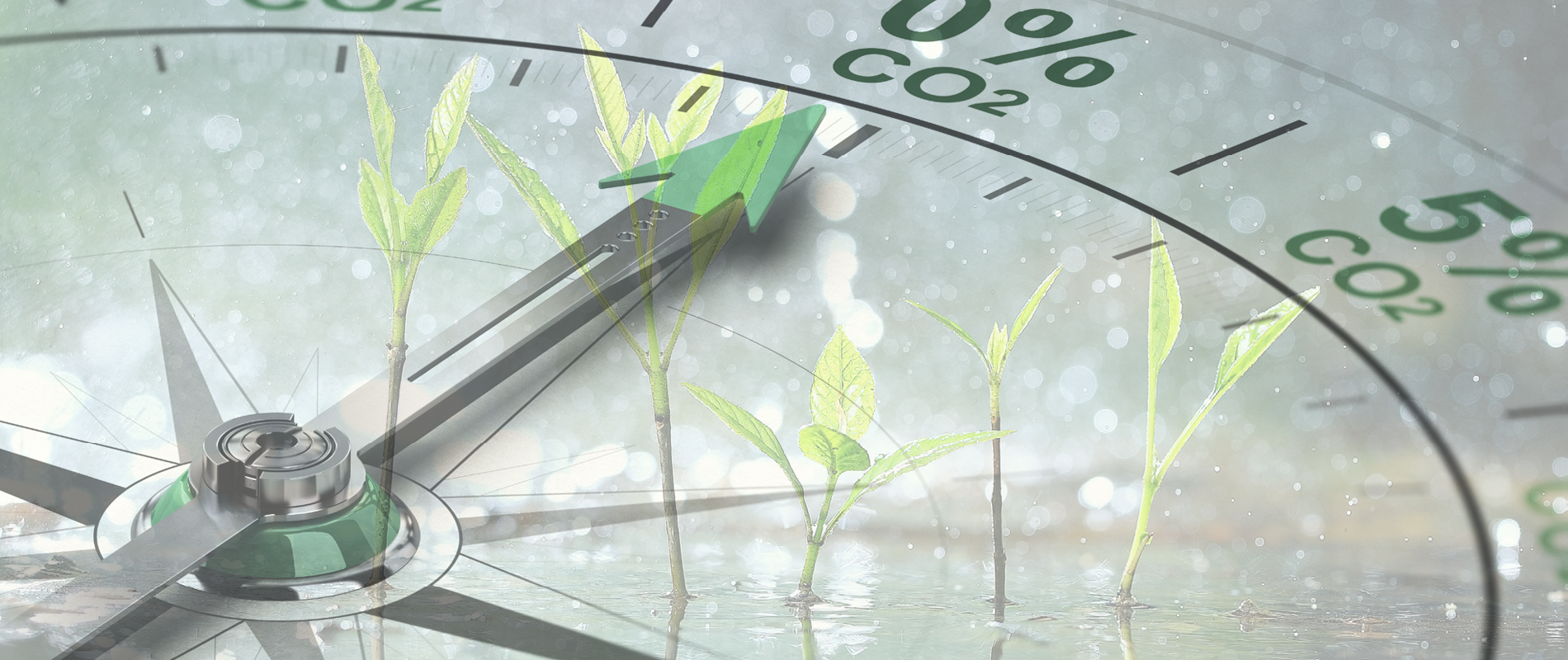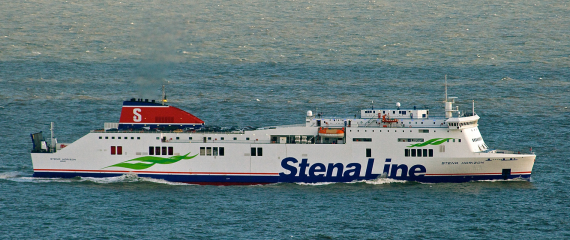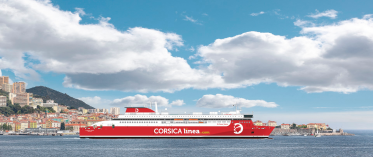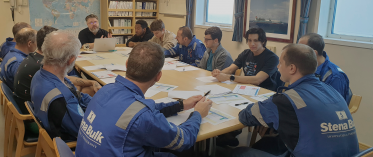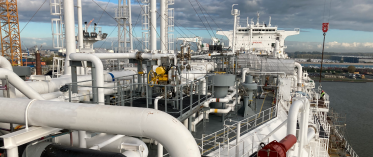Dan Sten Olsson - March 2020
MANY OPTIONS TO ZERO CARBON DIOXIDE EMISSIONS WE HAVE STARTED THE JOURNEY
Shipping is the most energy efficient way of transporting goods. Sea transport is usually large-scale and the sea is paving itself. Despite a doubled gross domestic production, the world’s carbon dioxide emissions in year 2050 from combustion of fossil fuels are expected to be no more than half of today’s total emissions. Fossil fuels include coal, oil and gas. Combustion of coal naturally produces the highest levels of carbon dioxide, followed by oil and gas. Methane gas emissions from combustion of LNG or LPG gas are ten to twenty times as aggressive as carbon dioxide from a climate point of view. Combustion of fossil gas will therefore not be a permanent solution from a climate point of view.
How will shipping manage the transition to climate-neutral energy consumption? Is it so difficult? Already with today’s pace in our energy savings we can reduce our energy consumption by half.
By 2050, the world’s gross domestic product will probably be twice as large as today. New economies are likely to be four times as big as today i.e. the western world’s share of world production will be halved compared with today. In order for us to fulfil our part of the assignment. Thus our consumption of fossil fuels must be reduced to a quarter of today’s consumption. Fortunately, electricity generation from wind and solar power is already cost effective today with SEK 0.4 per kWh for wind power in Sweden and SEK 0.25 per kWh for solar power in southern Europe. On the other hand, the electricity must be distributed and possible to store. An extension of the electricity grids will be important. On the other hand, the efficiency of the electricity grids through digitalisation may be significantly improved. The most popular forms of electricity storage are to preserve the water in our lakes and extract the electricity when needed via the electricity grid. Pumping up water to high altitude, when there is an electricity surplus, and then extracting electricity in the event of a power shortage is quite common in central Europe. Storing electricity in batteries is a small scale method, adaptable to the proximity of consumption. Batteries are good for electric passenger cars. However, the consumer demands the possibility of relatively fast charging and convenient distance to the nearest station. Electricity can also be converted to hydrogen through electrolysis. The hydrogen is then converted back to electricity via fuel cells. Batteries are heavy and have relatively small capacity.
Also, the electricity must be consumed within quite a short time otherwise the battery will discharge itself. Hydrogen is light and may be stored in its tank for a long time. Therefore, heavy trucks’ electricity is likely to be produced via the car’s hydrogen tank and the car’s fuel cells.
For Stena Recycling, recycling of batteries and reconditioning of batteries for reuse can become a big business going forward. Of course, we already recycle conventional batteries. We have acquired three small technology companies within the area of recycling lithium batteries.
Stena Recycling has started a new business for the reuse of batteries together with Stena Fastigheter. Our new houses at Kvillebäcken on Hisingen are equipped with solar panels, which produce electricity for the houses’ electricity supply. Stena Recycling’s batteries store the electricity, if the electricity is not yet needed. A battery loses its efficiency over time. Taking advantage of these batteries, when their capacity is no longer sufficient to accelerate a passenger car for example, can become very important over time.
Europe’s production of batteries is planned to increase fivefold in five years. We try to go hand in hand with the manufacturers of both cars and batteries. Technically we are quite well prepared, but now it is important to develop business models, plan our investments, negotiate partnerships and execute them perfectly.
Stena Line plans to order a ferry Stena Elektra, which will run on electricity only for the fifty nautical miles to Fredrikshamn. We do not need new ferries for this route until 2030, so we are looking at placing the order no later than 2026. Our need for this ferry type will be around six ships. However, in order to avoid childhood diseases, it is important that we let the development progress gradually. For distances longer than about 60 nautical miles, we will probably seek other solutions.
This is where hydrogen comes into the picture. Hydrogen can be created through electricity, but also in other ways. In ships, we have space to store large quantities of hydrogen. The advantage is that the hydrogen gas can be stored for a long time, which is not the case with electricity in batteries. Fuel cells can convert hydrogen to electricity. The electric motor has the advantage that it can reach 80% power output while the fuel engine does not get any better than 45% in power output. Ferries on ferry routes around 100 nautical miles or more are therefore likely to be fuelled with hydrogen.
Green electricity does not only have to be created by wind or sun. It can also be created by combustion of oil or gas where the carbon dioxide waste in the form of gas is returned to the oil or gas source. The technology is well known but has not yet been realized on a large scale. A price of carbon dioxide emissions of USD 50-100 per tonne would in many cases make carbon dioxide recovery profitable as an alternative to paying carbon tax. A carbon tax of USD 50 per tonne of emissions, would probably accelerate this development. Such a tax could very well be implemented in Europe, the US and China. If it is implemented simultaneously for the whole world, it will be competitive neutral. If it does not apply to the whole world, the tax can create very large shifts in competitiveness. Another discussion is that of who should receive the money and how the countries’ various tax collections are affected.
With an abundance of green energy, as mentioned, it is possible to produce hydrogen. Another alternative that is being researched is to use ammonia as a fuel. The advantage of ammonia is that it is abundant in the air. Another advantage is that ammonia can in principle be combusted in the combustion engines of today. The disadvantage of the gas is that it is terribly toxic.
Methanol is a liquid which, when incinerated, does not leave particles but well carbon dioxide. Our Stena Germanica ferry runs on methanol. Green methanol can be produced by degrading cellulose or by utilizing carbon dioxide from nature or from carbon dioxide emissions. We expect deliveries of green or carbon neutral methanol in the future.
For the time being, Stena’s vessels will continue to run on conventional oil, methanol and perhaps LNG. Our climate footprint will mainly be reduced through energy savings and our own electricity production from our wind turbines until our experiments with, above all, electricity use can be scaled up. We expect to continue with the Stena Jutlandica’s battery operation in the near future.
New laws and other forces will compel us to gradually reduce our climate footprint. Our progress or shortcomings will be transparent for everyone, and so we will be scrutinised from many directions. Continuous energy savings is something that we must all work on together. It is gratifying that our new vessel the Stena Estrid on the Dublin-Holyhead route consumes 30% less energy than the Stena Adventurer with approximately the same capacity. In the near future, we will take delivery of two more sister vessels and in 2022 another two vessels. Stena Fastigheter will probably have reduced its climate footprint per apartment by half as early as by 2023.
Our hope is that there will be market conditions in the near future for all our vessels to be able to operate with carbon-neutral fuels. Research and experiments will definitely enable new vessels to cope with the transition to climate neutrality, if not to 100%, so at least very close. However, investments in new vessels are very money-consuming. Only well-tested solutions may be considered and competition-neutral conditions must prevail in order for such large investments to take place, all of which takes time.
Our efforts produce good results, but the struggle, even though it has been going on for several years, has only just begun. Let’s continue our good work.
Dan Sten Olsson
Gothenburg 22 February 2020

